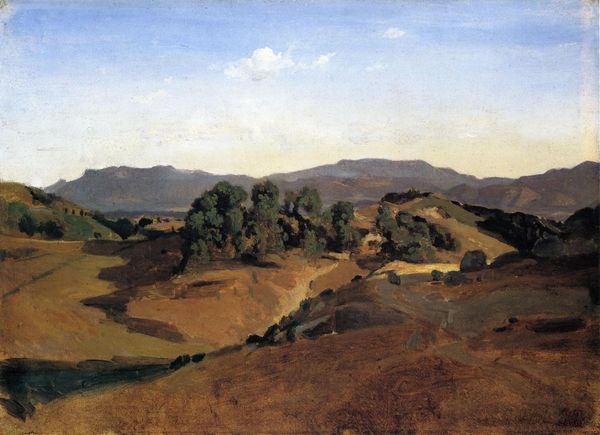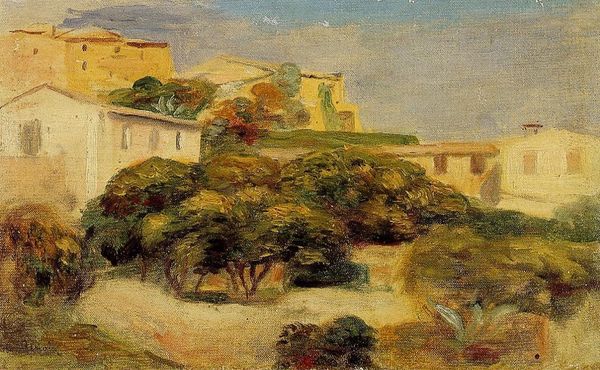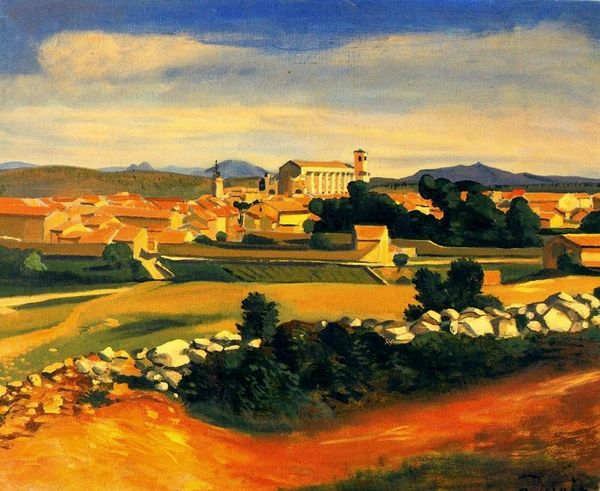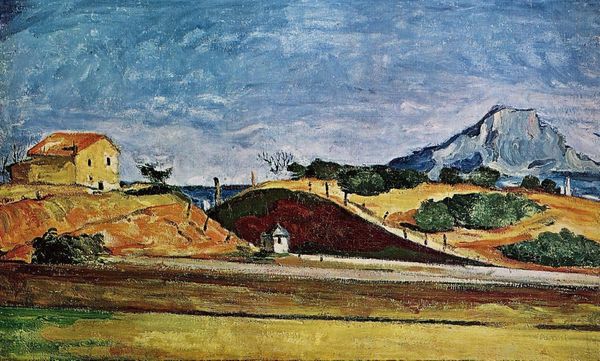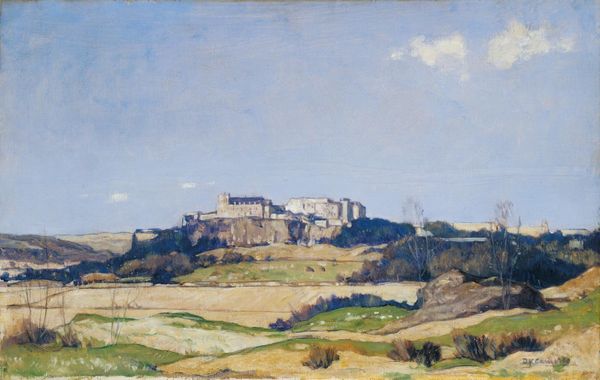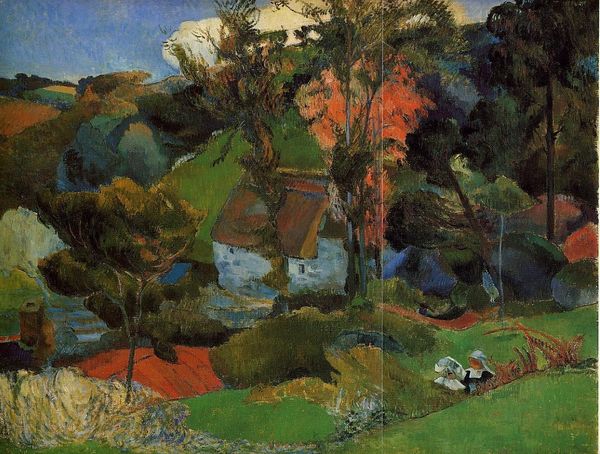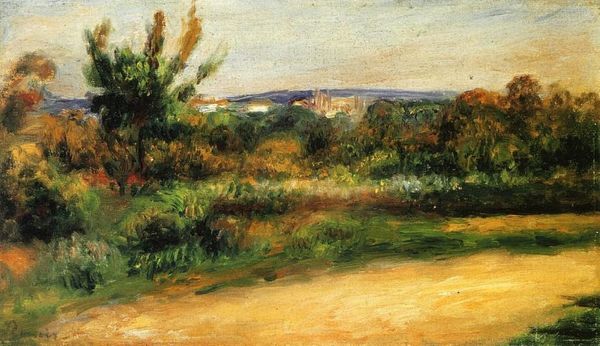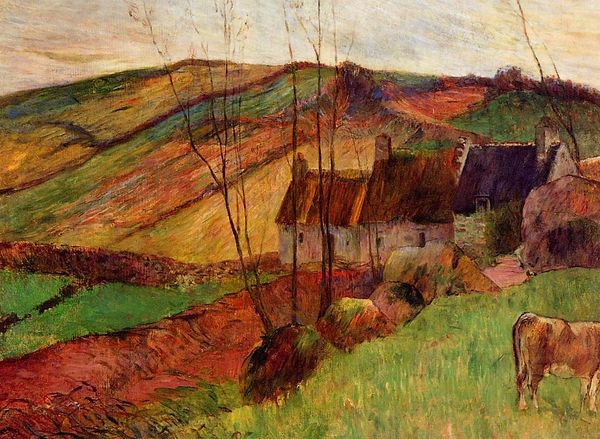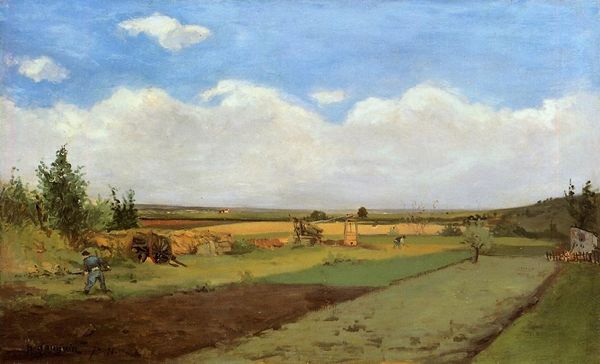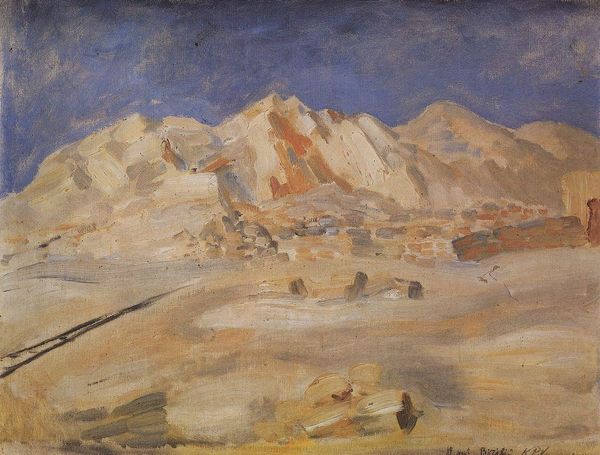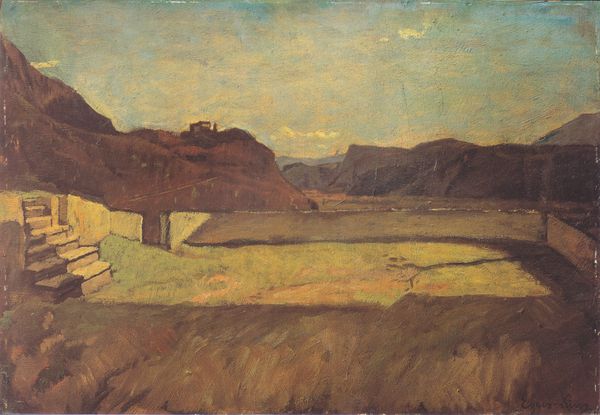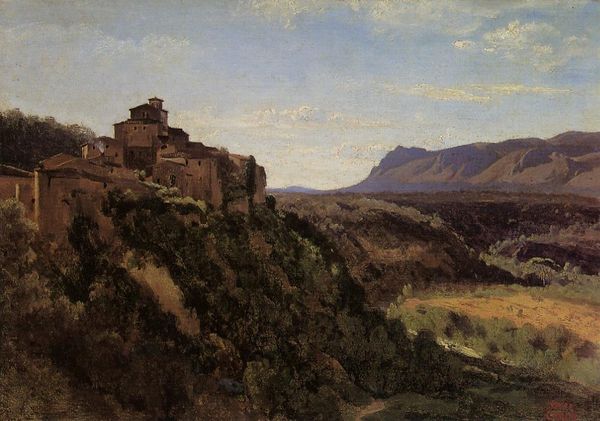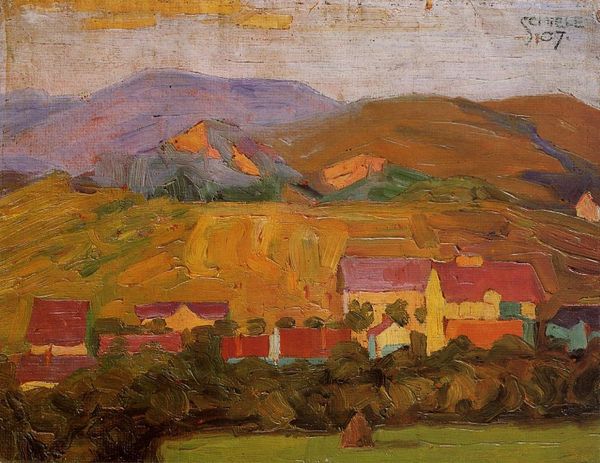
Aqueducts in the Roman Campagna 1828
0:00
0:00
jeanbaptistecamillecorot
Philadelphia Museum of Art, Philadelphia, PA, US
#
abstract expressionism
#
cliff
#
abstract painting
#
rural-area
#
impressionist landscape
#
possibly oil pastel
#
oil painting
#
rock
#
fluid art
#
acrylic on canvas
#
column
#
painting painterly
#
watercolor
#
expressionist
Dimensions: 24.1 x 43.8 cm
Copyright: Public domain
Editor: We're looking at Camille Corot's "Aqueducts in the Roman Campagna," painted around 1828. The earthy tones and broad strokes give it a somewhat desolate, yet peaceful feel. What historical context do you see informing this kind of landscape? Curator: Well, landscapes weren’t just about pretty scenery. Consider the power structures implied. Corot painted this during a time of burgeoning tourism, with the rise of the educated middle class going on 'grand tours.' Rome was a popular site for experiencing historical legacies. Editor: So, how does Corot's choice to depict these aqueducts fit into that narrative? Curator: It highlights a fascination with the past, but with a twist. Unlike earlier artists who focused on the glory of the Roman Empire, Corot presents these aqueducts as ruins, integrated into the everyday rural scene. It questions how society interprets and displays its past, as well as how accessible those interpretations truly are. Notice how the light isn't highlighting them for example. They blend into the scenery instead, which in turn changes our perception. Does that make sense? Editor: It does, so the focus shifts from simply celebrating Roman engineering to contemplating the passage of time and maybe even critiquing how historical narratives are curated or perhaps how empires decay. Curator: Precisely. It also plays into the broader trend of Romanticism and an increased interest in 'authenticity.' Artists and tourists alike began seeking raw experiences with nature and ancient sites outside the rigid structures of official history. Corot presents this through the visual aesthetic of a decaying history alongside a landscape continuing to grow. Editor: That’s a perspective I hadn't fully considered! Now I see the work as much more complex in its dialogue with cultural trends and power dynamics than I did originally. Curator: Absolutely. It encourages us to critically assess not just what's being depicted, but also *why* and *how* that depiction serves social and political functions. It’s about engaging with the past in a critical dialogue.
Comments
No comments
Be the first to comment and join the conversation on the ultimate creative platform.
